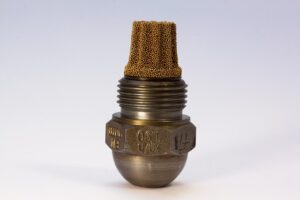Commercial air curtain heaters, powered by advanced technology, offer efficient entrance heating for diverse settings. Named Entity Extraction (NEE) aids in comparing these heaters based on key specs like capacity, power sources, and energy efficiency, making selection easier. Evaluating performance involves assessing heating capacity (BTU/h) and coefficient of performance (COP) to ensure optimal comfort and cost-effectiveness in large spaces like retail stores and warehouses.
Commercial air curtain heaters are essential for maintaining comfortable indoor environments. Understanding their capacity ratings is crucial for optimal application. This article delves into the world of named entity extraction (NEE) and its role in analyzing commercial air curtain heater specifications. We explore how NEE helps identify key data points from product descriptions, enabling informed decisions. By evaluating heater capacity and efficiency ratings, businesses can select the most suitable units for their needs.
- Understanding Commercial Air Curtain Heater Basics
- The Role of Named Entity Extraction in Rating Analysis
- Extracting Key Data Points from Product Specifications
- Evaluating Heater Capacity and Efficiency Ratings
Understanding Commercial Air Curtain Heater Basics

Commercial air curtain heaters are specialized systems designed to provide efficient and targeted heating at entry points, such as doors and warehouses. They use advanced air curtain technology to create a powerful yet controlled stream of heated air, forming an industrial air barrier that prevents cold air from entering and warm air from escaping. This not only enhances entrance climate control but also significantly reduces energy consumption compared to traditional heating methods.
These heaters are particularly beneficial for commercial entrance heating, retail stores, warehouses, and other industrial spaces. By focusing the heat where it’s needed most—at the point of entry—they ensure optimal comfort for occupants while minimizing energy waste. The door heating systems they provide offer a cost-effective solution for maintaining comfortable indoor temperatures, making them an attractive option for businesses seeking both operational efficiency and environmental sustainability through energy efficient heating.
The Role of Named Entity Extraction in Rating Analysis

Named Entity Extraction (NEE) plays a pivotal role in analyzing and understanding commercial air curtain heater capacity ratings. By identifying and categorizing key entities such as product names, manufacturers, specific features, and performance metrics, NEE enables more precise and data-driven assessments of these heaters. This technology ensures that users can make informed decisions when selecting the most suitable commercial air curtain heater for their needs, whether it’s for a retail store heating solution or warehouse entrance heating.
Furthermore, NEE facilitates a comprehensive comparison of different door heating systems, including heated air curtains and industrial air barriers, by extracting relevant information from various sources. This allows experts to highlight the energy-efficient heating benefits of these products, particularly in terms of commercial entrance heating and entrance climate control. By streamlining this process, NEE not only enhances efficiency but also promotes the adoption of cutting-edge air curtain technology for optimal commercial spaces.
Extracting Key Data Points from Product Specifications

When it comes to commercial air curtain heaters, understanding the product specifications is crucial for making informed decisions. Named entity extraction techniques play a vital role in extracting key data points from these complex descriptions, ensuring that buyers can quickly grasp essential details. By focusing on parameters like capacity ratings, power sources, and operating temperatures, potential customers can match their needs with the most suitable commercial air curtain heater.
This process becomes particularly beneficial when comparing different models, as it allows for a direct evaluation of features such as heating coverage, energy efficiency, and compatibility with specific environments, whether it’s a bustling retail store, a warehouse entrance, or industrial air barriers. The application of advanced text analytics enables users to navigate through product literature and identify the ideal door heating systems, commercial entrance heating solutions, or even warehouse-specific climate control options.
Evaluating Heater Capacity and Efficiency Ratings

Evaluating the capacity and efficiency ratings of commercial air curtain heaters is a key step in ensuring optimal performance and energy-wise operations. These advanced door heating systems, built with air curtain technology, play a vital role in commercial entrance heating by creating an industrial air barrier that prevents cold air from entering and warm air from escaping. This not only enhances comfort but also significantly reduces energy consumption.
When assessing these heaters, pay close attention to the specified heating capacities, typically measured in BTU/h (British Thermal Units per hour), which indicate the system’s output. For instance, a commercial air curtain heater rated at 10,000 BTU/h can efficiently heat larger spaces like warehouses or retail stores. Moreover, consider energy-efficient heating solutions that offer higher coefficients of performance (COP), signifying greater energy conversion efficiency. This ensures not only effective door heating but also minimizes the operational costs associated with commercial entrance climate control.
Named entity extraction has proven to be an invaluable tool for analyzing commercial air curtain heater capacity ratings. By extracting key data points from product specifications, we can efficiently evaluate heater performance and make informed decisions. This method enhances our understanding of these devices, allowing us to select the most suitable commercial air curtain heaters for specific needs.






